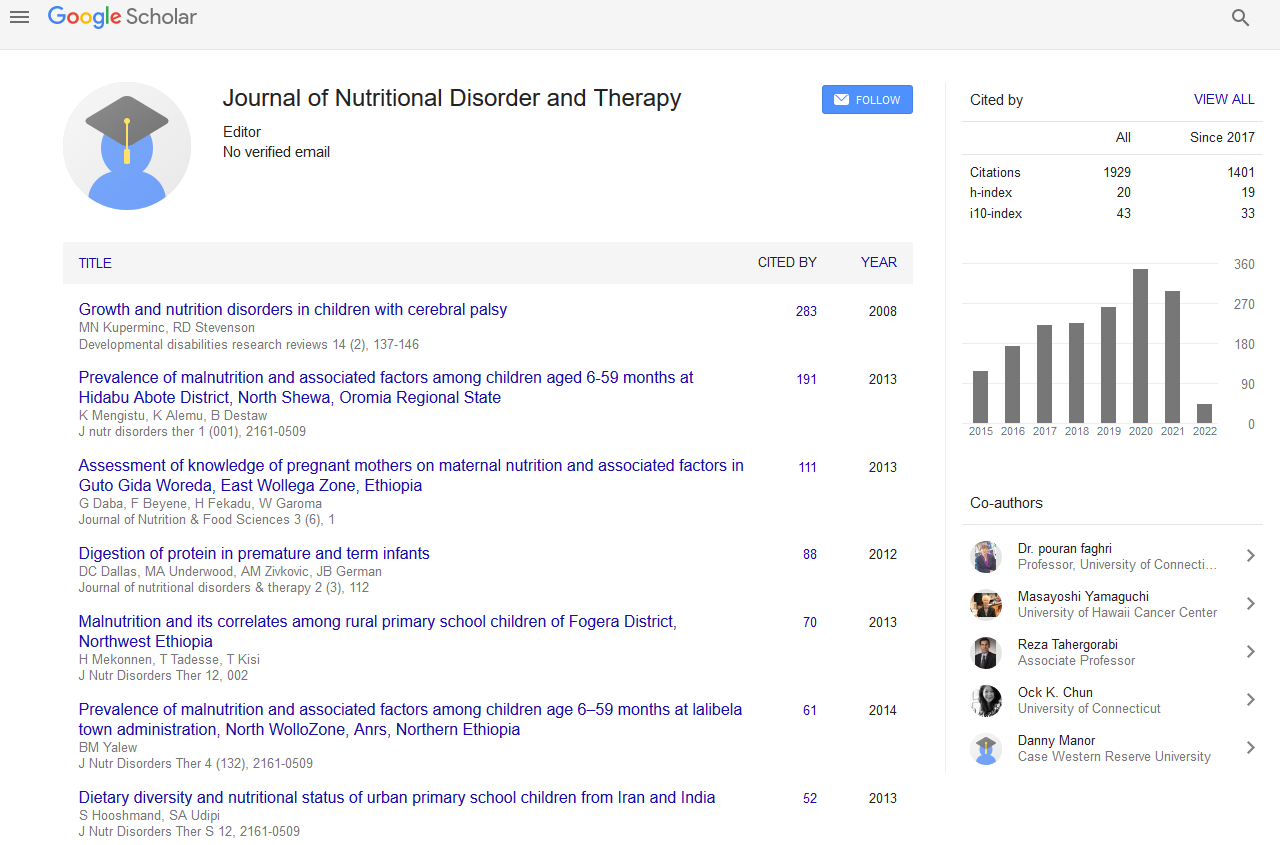Indexed In
- Open J Gate
- Genamics JournalSeek
- Academic Keys
- JournalTOCs
- Ulrich's Periodicals Directory
- RefSeek
- Hamdard University
- EBSCO A-Z
- OCLC- WorldCat
- Publons
- Geneva Foundation for Medical Education and Research
- Euro Pub
Useful Links
Share This Page
Journal Flyer

Open Access Journals
- Agri and Aquaculture
- Biochemistry
- Bioinformatics & Systems Biology
- Business & Management
- Chemistry
- Clinical Sciences
- Engineering
- Food & Nutrition
- General Science
- Genetics & Molecular Biology
- Immunology & Microbiology
- Medical Sciences
- Neuroscience & Psychology
- Nursing & Health Care
- Pharmaceutical Sciences
Effect of home based child care on child mortality and malnutrition in a tribal belt: Result of field cluster randomized control trial
International Conference on Pediatric Nutrition
August 01-02, 2016 New Orleans, USA
Ashish Satav, Abhijeet Bharadwaj, Jayashree Pendharkar, Kavita Satav and Vibhawari Dani
MAHAN, (Meditation, AIDS, Health, Addiction, Nutrition), India
Posters & Accepted Abstracts: J Nutr Disorders Ther
Abstract:
Background: Melghat, a hilly tribal area in Maharashtra has low socio-economic conditions, scarce hospital services, high-risk child care practices and low health-seeking behavior. Home deliveries are up to60%. Common childhood infectious illnesses do not get timely adequate treatment. Prevalence of malnutrition is very high. A home based child care model consisting of neonatal care, treatment of childhood infectious illnesses and behavior change communication (BCC) was designed for reducing child mortality and malnutrition. Methods: A cluster-randomized control field trial was conducted in Melghat. Study area constituted 35 village shaving population of 36,000. Control Area (CA) and Intervention Area (IA) received usual government health services. In addition IA received interventions through village health workers (VHWs)for essential new-born care (birth preparedness, safe delivery, thermal care, breast-feeding promotion and danger sign recognition);BCC for health, nutrition and hygiene by demonstrations of hand washing, nail cutting, nutritious recipes, use of flip charts, audio-visuals; and treatment of childhood illnesses like diarrhea, pneumonia, malaria, neonatal sepsis etc. Outcome indicators are still birth rate (SBR), neonatal mortality rate (NMR), infant mortality rate (IMR), under-5 children mortality rate (U5MR), perinatal mortality rate (PNMR) and prevalence of severe malnutrition. Analysis was by intention-to-treat. Results: The net reduction in IA over CA is 121.34% (P<0.0001) in SBR,50.87% (P<0.0001)in NMR, 61% (P<0.0001) in IMR, 68.82% (P<0.0001) in U5MR, 107.34% (P<0.0001) in PNMR and 39.70% (P<0.0001) in prevalence of severe malnutrition. Interpretation: Results show statistically highly significant reduction in SBR, NMR, IMR, U5MR, PNMR and prevalence of severe malnutrition. This affordable, acceptable, achievable and safe model is replicable for reducing child mortality and malnutrition in other similar areas. A socio-culturally contextualized, community-based intervention, targeted at high-risk child-care practices, can lead to substantial behavioral modification and reduction in child mortality. This study had positive impact on government health policies.
Biography :
Emial: drsatav@rediffmail.com


